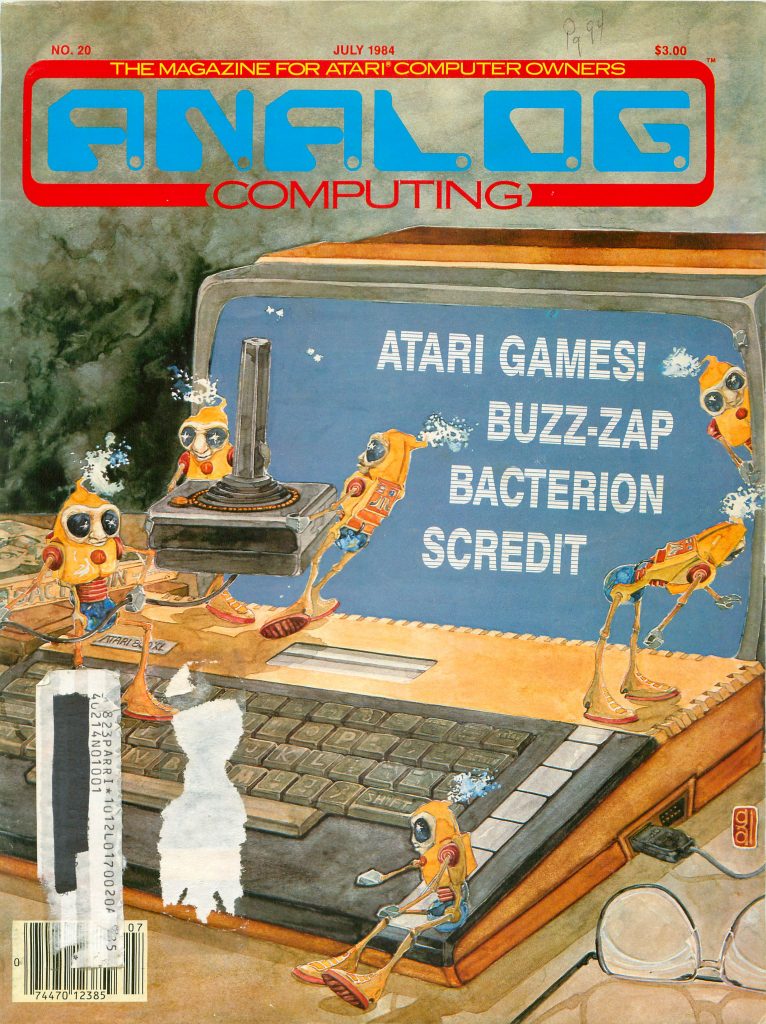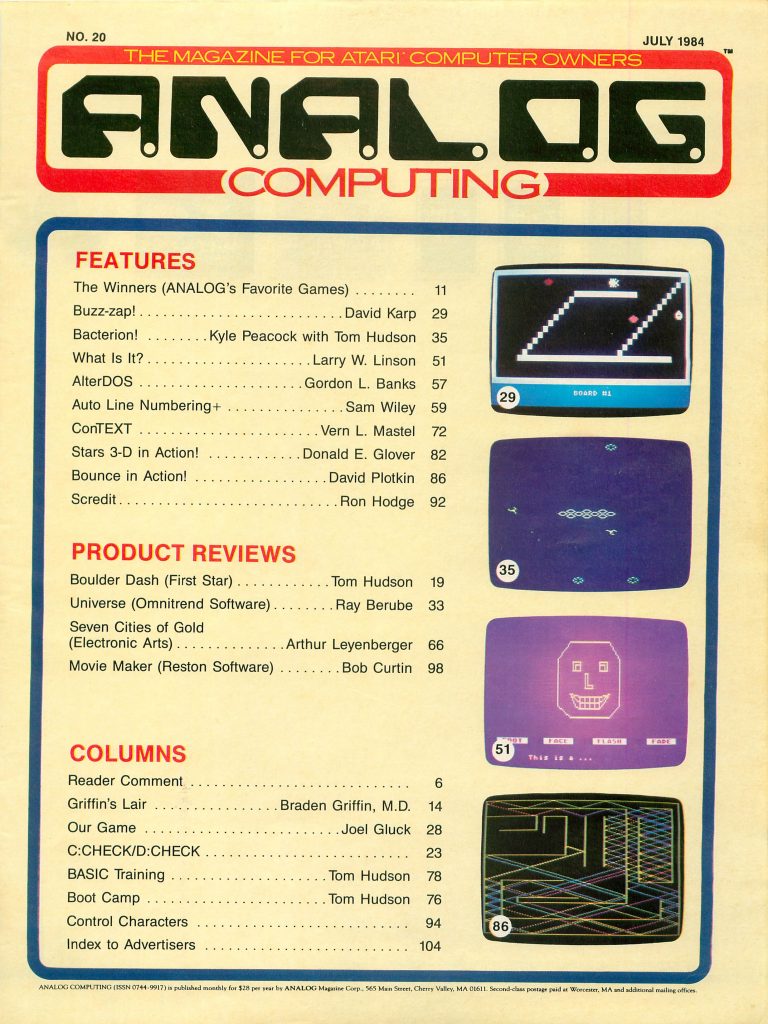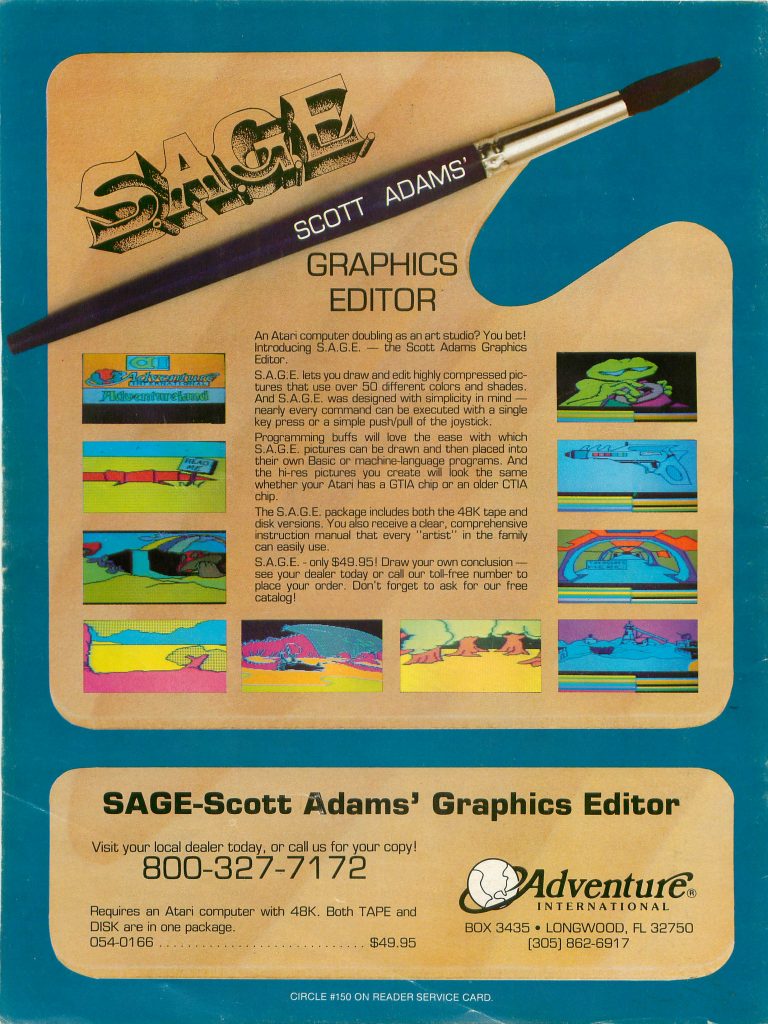Antic was one of the two major Atari 8-bit magazines in the U.S. (the other being ANALOG). Antic also had some coverage of the Atari ST though 1984 was before that. The August 1984 issue includes:
Features
- It’s Mere Horseplay – A type-in program for handicapping horse races.
- Add IBM Or CP/M Capability To Your System – A look at the ATR8000, a versatile expansion for Atari 8-bit computers that adds the ability to connect standard disk drives and printers and depending on the variant, can also add CP/M or IBM PC compatability.
- Do More With DOS 2 – Using DOS 2.0 to increase disk storage with the Atari 1050 disk drive.
- Disk Drive Survey – A look at some of the disk drives available for the Atari 8-bit, including the TRAK AT-D2, RANA 1000, INDUS GT, Atari 1050, ASTRA 1620, and Atari 810.
- Lucasfilm And Atari – Early Lucasfilm games came out first on the Atari 8-bit. These include Ballblazer and Rescue on Fractalus which are discussed here.
- Embark On The Road To Adventure – A look at adventure games including Infocom’s Enchanter, Infidel, and Planetfall.
- Logic According To Boole – Using Boolean logic in your programs.
- Escape From Fragile Floppies – A look at the AMDC I and AMDC II, single and dual 3-inch floppy drive systems for the Atari 8-bit.
- The Care And Feeding Of Floppy Disks – A guide to taking care of your floppy disks.
Departments
- Inside Atari – Atari’s sponsorship of the women’s Olympic volleyball team.
- Education – A type-in memory game that gives you what is basically a computer version of Simon.
- Communications – A look at password protected BBS’s. In the early days, you didn’t necessarily need a login and password to access a PC. Though obviously, having a unique account has its advantages and would become the norm.
- Game of the Month – A type-in action/adventure game called Creepy Caverns. It looks a little like Gateway to Apshai.
- Toolbox – A type-in tool for creating a variable cross-reference list for your programs. It gives you a list of variables and line numbers on which they appear.
- Product Reviews – Reviews of the Aprom and Six Pack, Panzer-Jagd (Avalon Hill), Exodus: Ultima III (Origin), Safetyline (Maximus), Spare Change (Broderbund), BASIC Building Blocks, 810 Turbo, Dragonriders of Pern (Epyx), and Success With Math (CBS Software).
- New Products – A brief look at new and upcoming products including Bruce Lee (Datasoft), C-221M and C-2215 disk drives, Pack It/Chain It, Relax (Synapse), Diskette Head Cleaning Kit, and more.

…and more!







